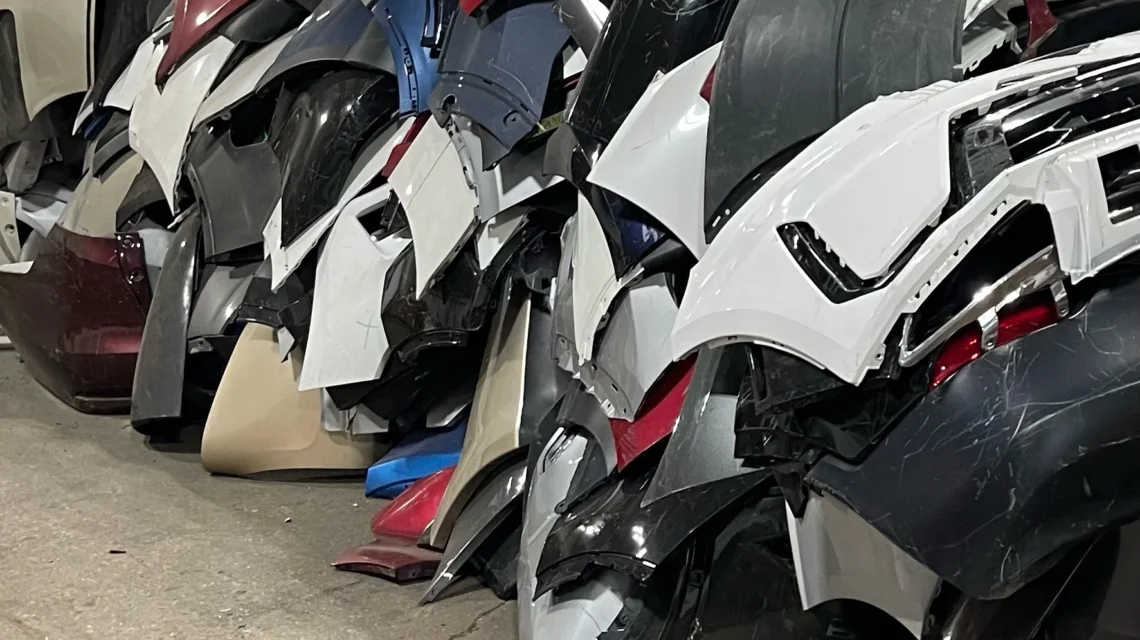Zionsville, IN – October 2025 — Plasnomic is once again leading the charge, shifting its focus toward major OEM, government, recycling, and collision industry collaborations to advance responsible plastic waste management.
Driving a groundbreaking circular model for automotive plastics in partnership with the U.S. Department of Energy (DOE), Oak Ridge National Laboratory (ORNL), the American Chemistry Council (ACC), leading OEMs, and the collision repair sector
In a landmark series of discussions in recent weeks, with representatives from Ford, General Motors, Volkswagen, Toyota, Hyundai, and key collision partners, Plasnomic helped define a unified vision for addressing one of the industry’s most pressing issues plastic waste across the vehicle lifecycle.
The automotive collision and aftermarket sectors are currently the second-largest contributors of polypropylene waste to landfills, with bumper covers and headlights making up the majority of discarded materials. Previous recycling efforts have been fragmented and small-scale, lacking the structure needed to achieve measurable impact With the majority of the industries parts going straight to general waste.
Plasnomic’s new planned initiative, named “CORE”, plans to establis a regulated and commercially viable framework for managing plastic waste and circular parts recovery across the collision industry.
The program plans to process the majority of collected materials into recycled feedstock for manufacturing new automotive components, while reusable parts starting with bumper covers and headlights will be refurbished through a certified Plasnomic repair process, ensuring traceability, measurable sustainability outcomes, and potential OEM endorsement as approved circular parts.
Currently, salvaged headlight cores from the collision industry often traded through informal markets represent an estimated $100 million annual opportunity on damaged core value alone.
Likewise, high-quality bumper covers, often retrieved from waste piles at repair shops and resold either damaged or repaired using low-quality methods through online marketplaces such as eBay or local parts vendors, represent another untapped source of value and a growing concern for the industry, with no traceability or control over where this plastic waste ends up or who collects it.
Under the CORE model, Plasnomic and its partners will collect and process damaged components from collision centers through industry-certified plastic waste recyclers, identifying and extracting reusable cores for refurbishment and resale through certified reconditioning hubs or approved parts vendors. The majority of the remaining plastics will be sorted, shredded, and converted into raw materials for new manufacturing — creating a closed-loop system that transforms waste into resources, strengthens the circular economy for automotive plastics, and diverts millions of parts from landfills each year.
“This collaboration marks a major milestone for the collision, supply, and manufacturing sectors. It’s time we finally put regulation and process behind how we manage plastic parts waste,” said Brian Driehorst, CEO of Plasnomic. “By coordinating efforts between collision shops, plastic recyclers, government agencies, and OEMs, we’re proving that circular plastic recovery can be both regulated and economically sustainable — something that has long been missing in our industry and is urgently needed.”
With this initiative, Plasnomic continues to drive the industry toward a smarter, cleaner, and more sustainable future, not only through the advancement of plastic repair standards but also through the responsible management of plastic parts waste creating a future where collaboration, innovation and accountability truly close the loop on automotive plastics.


